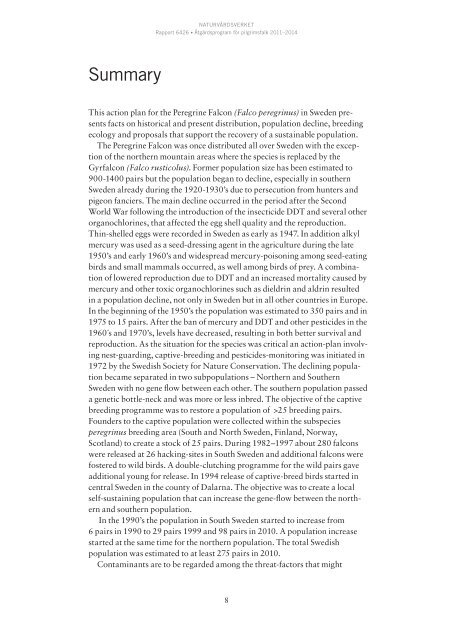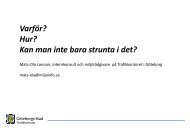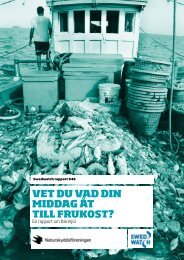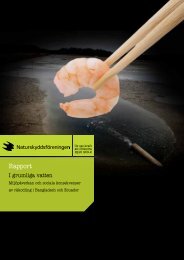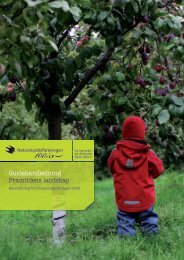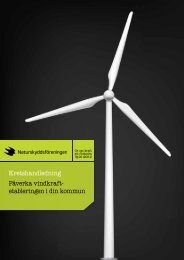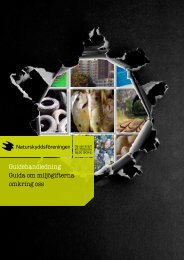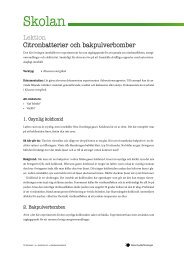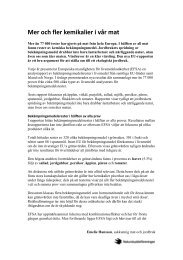Åtgärdsprogram för pilgrimsfalk 2011–2014 - Naturskyddsföreningen
Åtgärdsprogram för pilgrimsfalk 2011–2014 - Naturskyddsföreningen
Åtgärdsprogram för pilgrimsfalk 2011–2014 - Naturskyddsföreningen
You also want an ePaper? Increase the reach of your titles
YUMPU automatically turns print PDFs into web optimized ePapers that Google loves.
summary<br />
naturvårdsverket<br />
rapport 6426 • <strong>Åtgärdsprogram</strong> <strong>för</strong> <strong>pilgrimsfalk</strong> <strong>2011–2014</strong><br />
This action plan for the Peregrine Falcon (Falco peregrinus) in Sweden presents<br />
facts on historical and present distribution, population decline, breeding<br />
ecology and proposals that support the recovery of a sustainable population.<br />
The Peregrine Falcon was once distributed all over Sweden with the exception<br />
of the northern mountain areas where the species is replaced by the<br />
Gyrfalcon (Falco rusticolus). Former population size has been estimated to<br />
900-1400 pairs but the population began to decline, especially in southern<br />
Sweden already during the 1920-1930’s due to persecution from hunters and<br />
pigeon fanciers. The main decline occurred in the period after the Second<br />
World War following the introduction of the insecticide DDT and several other<br />
organochlorines, that affected the egg shell quality and the reproduction.<br />
Thin-shelled eggs were recorded in Sweden as early as 1947. In addition alkyl<br />
mercury was used as a seed-dressing agent in the agriculture during the late<br />
1950’s and early 1960’s and widespread mercury-poisoning among seed-eating<br />
birds and small mammals occurred, as well among birds of prey. A combination<br />
of lowered reproduction due to DDT and an increased mortality caused by<br />
mercury and other toxic organochlorines such as dieldrin and aldrin resulted<br />
in a population decline, not only in Sweden but in all other countries in Europe.<br />
In the beginning of the 1950’s the population was estimated to 350 pairs and in<br />
1975 to 15 pairs. After the ban of mercury and DDT and other pesticides in the<br />
1960´s and 1970’s, levels have decreased, resulting in both better survival and<br />
reproduction. As the situation for the species was critical an action-plan involving<br />
nest-guarding, captive-breeding and pesticides-monitoring was initiated in<br />
1972 by the Swedish Society for Nature Conservation. The declining population<br />
became separated in two subpopulations – Northern and Southern<br />
Sweden with no gene flow between each other. The southern population passed<br />
a genetic bottle-neck and was more or less inbred. The objective of the captive<br />
breeding programme was to restore a population of >25 breeding pairs.<br />
Founders to the captive population were collected within the subspecies<br />
peregrinus breeding area (South and North Sweden, Finland, Norway,<br />
Scotland) to create a stock of 25 pairs. During 1982–1997 about 280 falcons<br />
were released at 26 hacking-sites in South Sweden and additional falcons were<br />
fostered to wild birds. A double-clutching programme for the wild pairs gave<br />
additional young for release. In 1994 release of captive-breed birds started in<br />
central Sweden in the county of Dalarna. The objective was to create a local<br />
self-sustaining population that can increase the gene-flow between the northern<br />
and southern population.<br />
In the 1990’s the population in South Sweden started to increase from<br />
6 pairs in 1990 to 29 pairs 1999 and 98 pairs in 2010. A population increase<br />
started at the same time for the northern population. The total Swedish<br />
population was estimated to at least 275 pairs in 2010.<br />
Contaminants are to be regarded among the threat-factors that might<br />
8


